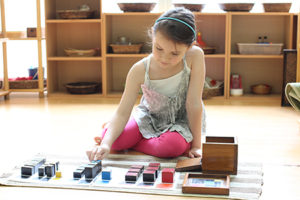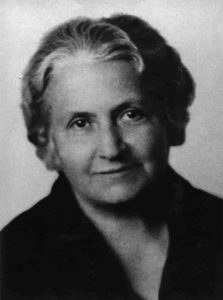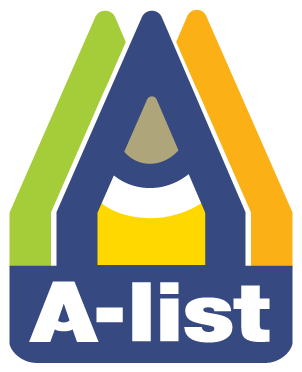What is Montessori?
Montessori is a method of education that is based on self-directed activity, hands-on learning, and collaborative play.
What is Montessori Education?

Montessori education is a scientific method of teaching, developed by Dr. Maria Montessori in 1907, to educate children through direct control of their environment. It uses materials to stimulate a child’s senses, which makes the learning experience more memorable. The Montessori education method is a progression of learning beginning with activities in practical life and the sensorial, activities that internalize independence, coordination, concentration and order (ICCO), which in turn help a child to transition to more abstract learning in Culture, Math and Language.
The Montessori curriculum includes materials in Practical Life to enhance motor skills through daily functions; Sensorial to allow a child to explore his senses, and gain pre-math skills; Cultural, which includes learning about plants, animals, human anatomy, the Earth, outer space, and other cultures; Math, which helps a child understand mathematical functions in concrete form; and Language which teaches vocabulary, writing, and reading.
The Montessori education method supports and encourages multi-age grouping. Older children work with younger children; giving the older children leadership skills, and encouraging the younger children to accomplish more challenging activities. Multi-age grouping also promotes respect between older children and younger children, and reinforces knowledge of the Montessori materials.
Who’s Maria Montessori?

Maria Montessori
Maria Montessori (1870-1952) was an Italian physician, educator, philosopher, and three-time Nobel Peace Prize nominee. She became the very first woman in Italy to receive a degree in medicine in 1894. She worked with disabled children in Rome as a child psychiatrist. After being appointed director of the Orthophrenic School in 1898, Maria Montessori taught special needs children using their environment as the educational tool. This endeavor laid the foundation for what we know today as the Montessori Education Method. Maria Montessori believed that if her method would work for disabled children then it could be used to benefit normal children in a powerful way. She once said, “Free the child’s potential, and you will transform him into the world.”
Naturally, wanting to help improve education and spread love for learning with others, Maria Montessori opened her first day care in Rome. It was called Case dei Bambini (Children’s house) and was where she began perfecting her method. Maria Montessori realized success in Rome with the Children’s House. Her ideas and understanding of the child psyche began to spread to other parts of the world. The first Montessori school in the United States was established in Tarrytown N. Y. in the year 1912. And in other regions of the world, such as Europe and India, Montessori schools were growing rapidly.
As Montessori became a powerful influence in India, Maria Montessori interned at the Theosophical Society of India from 1939 to 1949. Here she created the Training Courses with the aid of her son Mario Montessori. Maria Montessori lived out the remainder of her life in the Netherlands, which is now the headquarters of the Association Montessori Internationale (AMI). Maria Montessori passed away in the Netherlands in 1952 after a lifetime devoted to the study of child development.
The Montessori Education Method has seen increases and decreases in its popularity, but many believe that the Montessori Education Method can be a powerful tool for education and real learning. We can all learn more of ourselves and give our children, our greatest treasures, love and respect when it comes to learning.

